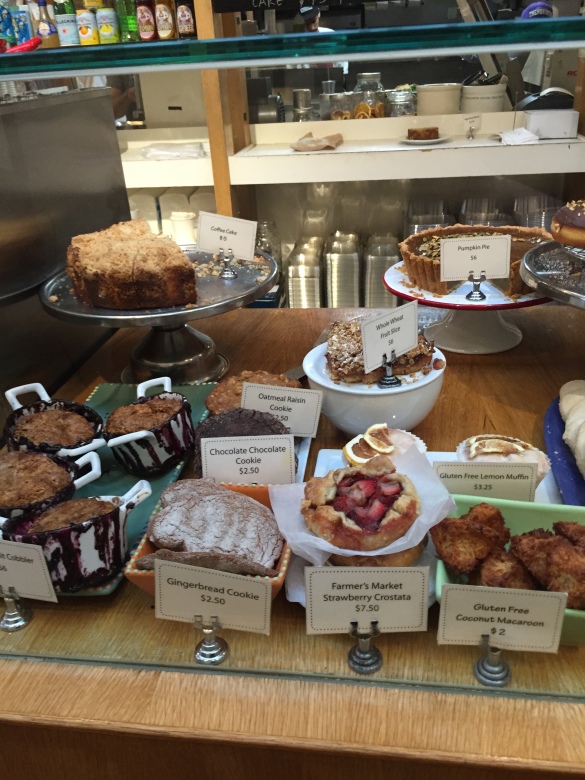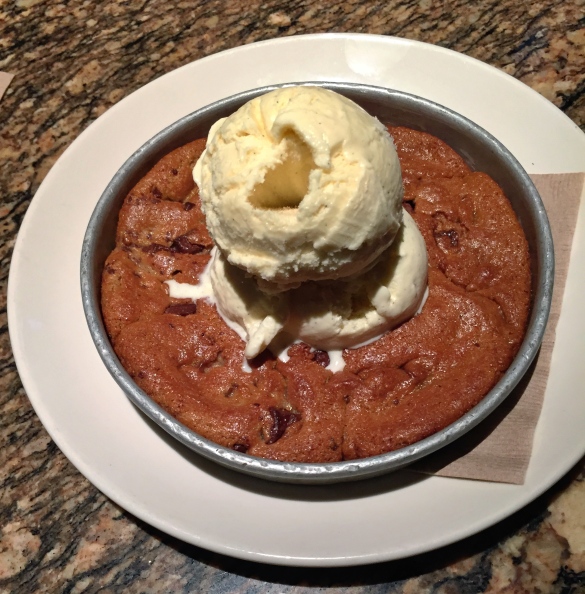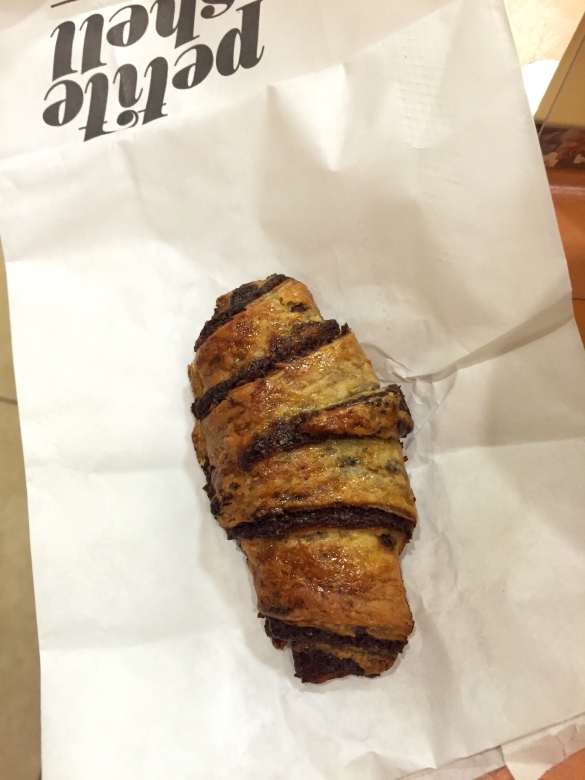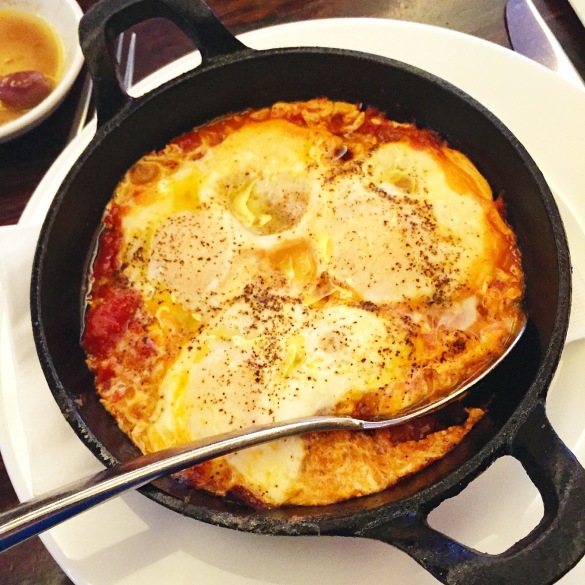
Mezzetim from Bustan. Really a promise of more food photos if you scroll past all the “thoughts” and “feelings.”
Wow, it’s been a while since we’ve talked, hasn’t it? Hard to believe I’m actually sitting my butt down and writing a post for Experimental Gastronomy. But believe it, because I’m hoping to make this a regular recurring deal again. As I promised oh so many months ago, my intention is to have this blog evolve, since my own relationship with food has changed since EG’s inception way back in 2013. Food forms the basis of both my professional and academic pursuits, so it seems foolish to imagine that I could continue posting reviews and musings as just a passionate, fairly uninformed reader. However, before I start busting out new vocabulary (bottarga! torchon! and my favorite, chef de partie!), I want to take a step back into my comfort zone, aka, neuroticism, and talk about some of the pseudo-struggles that have come with my new perspective.
Maybe it’s because I’m the youngest of four kids, and the only girl, but I’ve never liked to argue. I’d guess that part of that comes from early formative experiences when my older brothers (the youngest of them 6 years my elder), tore apart my arguments for why I deserved a second chocolate chip cookie rather than them. With that background, perhaps it’s no surprise that I tend to default to avoiding confrontation if I’m not armed with a lot of facts and statistics. This might seem counterintuitive, since I was president of the Debate Club in high school, but actually that’s where I was most comfortable — I’d spend the week before each meeting studying up on the topic so I could make a coherent argument for my side.
This is actually a large factor for why I chose to go back to school (that, and a deep, abiding love for spiral notebooks). I found myself getting more and more passionate about issues of nutrition and food policy, but reluctant to take a public stand since my knowledge was limited to what I’d read on the Internet. Unlike many people in my generation, I don’t believe that having a Twitter handle means I’m a qualified expert. I’m hoping that with 3 or so years of NYU Food Studies education stuffed into my brain, I might actually be able to give a thorough answer when my friends and family members ask me about heirloom vegetables or GMOs.
Which brings me back to a current dilemma: what role does the informed friend or family member play in the lives of those around them? I was asked a number of times over the holidays about my opinions on factory farming, genetic modification, and organic food. In those cases, as with politics and religion, I feel like the best bet is to gently voice my opinions, but admit that I’m only about a hundredth more informed than the questioner at this point, and try to point them to resources with more information.
But what if you see someone making food choices in their life that you feel are less healthy, or even harmful? I really wrestle with this — I told people when I started reading more about the American food system and nutrition that I never want to be the obnoxious, preachy person off to the side. I went to high school with too many overly-vocal vegetarians to enter into that headspace. Food is so intensely personal for people, embedded with past experiences both positive and negative, and imbued with cultural resonance that draws the map we all navigate everyday. It’s nearly impossible to fully appreciate someone’s relationship with food without a deep knowledge of their background, and even then, we all have good and bad days. We’re usually witness to just a small sliver of an individual’s food choices — I recently realized that one of my friends only sees me in group settings where I tend to relax my general healthy food regimen — I have to wonder if she thinks I shovel Oreos and Peanut Butter M&Ms into my mouth 24/7, given how I behave around her. And that’s exactly the problem — I’m far from a paragon of Gwyneth Paltrow-esque purity. So who am I to clamber up on a high horse and raise an eyebrow when you pour yourself a glass of Crystal Light or bust open a box of Skinny Cow?
Do you only step in if you know there’s conclusive scientific evidence? Do I push for my relatives to buy organic milk to avoid antibiotics in their dairy? Do I become that person that sends around links to NPR articles about salmonella contamination in industrially-farmed chicken? Or is it the same as other taboo topics — in polite company, keep it to yourself? The Victorian version of food advocacy — speak only when spoken to? One of my cousins is a family doctor, and has to put up with us constantly having her check our throats whenever we sniffle slightly. But I’ve never seen her lay down the law on someone as they dive into their fifth helping of brisket during seder (that someone often times being me).
Beyond the initial question of whether to pipe up, even when I am directly asked questions about nutrition and the state of food production in America, I find myself being consciously tentative. One my greatest fears is to come off as patronizing, yet I hope someday to make educational media for mass audiences. How can I one day get up on a soapbox if I can’t negotiate the nuances of a conversation with a relative or friend? Does NYU offer a course on that?
Like most things in life, I guess it’s just going to be a messy, complex work in progress. In the meantime, let’s switch gears and get into a little food porn to lighten the mood.
Here’s a small sampling of deliciousness from the past couple of months:
First up, some bites from my very short trip to LA at the beginning of the month, where I reunited with my Gastronomic Life Partner Jacob for a whirlwind tour of old edible favorites and new discoveries.
Right after I landed at LAX, we drove over to Manhattan Beach. My colleague Elena had basically insisted we visit Fishing with Dynamite, an elevated take on the seafood shack that had blown Elena away. Jacob and I were overwhelmed by the hospitality of the place — we ended up speaking to both the chef de cuisine and the sous chef over the course of our meal. One of the highlights was the Chef David’s Mom’s Cape Cod Squash Rolls, a sublimely simple dish, which was simultaneously unusual and nostalgic. Served with aromatic rosemary butter, the rolls came in a tiny cast iron skillet, shiny on top and tender, tinted slightly orange from the squash. I could have made a meal of this vegetal take on Parker House Rolls, but it was only the beginning of a smorgasbord of seafood and produce. I’m really hoping I can go back for dinner the next time I make it out west.
Immediately after lunch, we went for dessert at Huckleberry Bakery & Cafe in Santa Monica. I spent a good five minutes hemming and hawing over what to get out of the display case that was brimming with baked beauties. Ultimately, Jacob and I settled on the Buckwheat Apple Cake and the Chocolate Pudding.
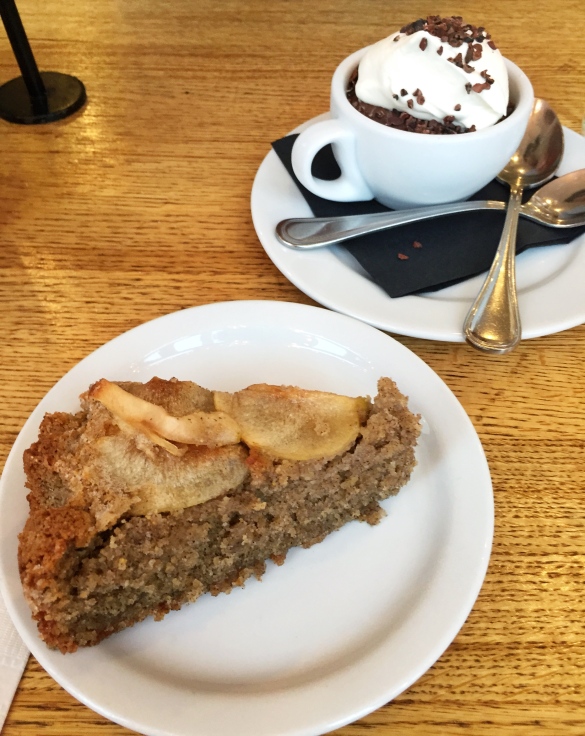
Buckwheat Apple Cake and Chocolate Pudding from Huckleberry: one side nutty and crumbly, the other rich and smooth.
I really enjoyed the nuttiness that came from the buckwheat cake. I’d love to start baking with alternative flours this year, since it seems like they’re much more readily available than before. And the chocolate pudding? Decadent, rich, deeply dark chocolate plus homemade whipped cream? I don’t think I really have to say anything more.
My last LA pick is not from a hot-new-spot, does not feature any sort of kale, and is not a taco (although I did have an awesome sampler from Guisado’s while I was there). After hearing Jacob go on about it for years, I finally tried the fabled Pizookie from BJ’s Restaurant & Brewhouse. Faced with an expanded menu that touted an Oreo, Salted Caramel, or Triple Chocolate iteration, I opted for the original. I’ve gotta have a baseline, you know? For the similarly uninitiated, a Pizookie is a giant chocolate chip cookie baked in a cake tin, and topped with a scoop of vanilla ice cream. Imagine all your grocery store cookie cake dreams, warmed up and topped with your favorite substance on earth. So yeah, it was worth it.
Moving back to NY, we’re rounding out the round-up with some Jew-y foods. First is the Chocolate-Hazelnut Rugelach from brand-new bakery Petite Shell on the UES. Matt and I went there to check out their line-up of unusual rugelach flavors, which ranged from the trendy Dulce de Leche to the downright strange White Chocolate–Granny Smith Apple. But I wanted to focus on the Chocolate-Hazelnut, since that runs in direct competition to EG favorite Breads Bakery (Petite Shell also offers a babka, but I haven’t had the chance to check it out yet). So how does it stack up? Pretty close, but I think Breads edges a victory out. The Nutella-esque filling from Petite Shell was sweeter than Breads, and I missed the stronger cocoa notes of the first rugelach to open my eyes to the format’s potential. Petite Shell also fell down on service, but it was the first weekend they were open, so they may shape up in time.
Last but not least, we finally have another entrant to my NYC shakshuka talent competition, this time from the UWS’s Bustan. I went there for brunch with a couple of college friends and was blown away by the freshly baked flatbread (ain’t no pita in this joint). Bustan has an extensive brunch menu featuring sweet and savory dishes, and offers 6, count ‘em, 6 variations on shakshuka. I went with the classic, which featured perfectly runny yolks, a peppery and bright tomato sauce, and stewed bell peppers and onions. I’d still recommend Zizi Limona for the die-hard shakshuka fan, but Bustan gets close to the mark. Especially with that amazing flatbread hot out of the oven and slicked with oil.
I’ll end on the note of salivation-inducing carbs, as per usual. Here’s my promise to you — I’m not gonna let this blog linger. I can’t promise I’ll be consistent, or that this won’t end up as a place sometimes filled with the existential crises of a Food Studies student, but at least there will be new content. And as always, if you follow me on Facebook, Twitter, or Instagram, you’ll pretty much get just food photos, without all the annoying thoughts and context to accompany them. Stay tuned and stay hungry.
Bustan
487 Amsterdam Avenue
http://www.bustannyc.com
BJ’s Brewhouse and Restaurant
http://www.bjsrestaurants.com
Fishing with Dynamite
1148 Manhattan Avenue
Manhattan Beach, CA
http://www.eatfwd.com/
Huckleberry Bakery & Cafe
1014 Wilshire Boulevard
Santa Monica, CA
http://www.huckleberrycafe.com/
Petite Shell
1269 Lexington Ave

